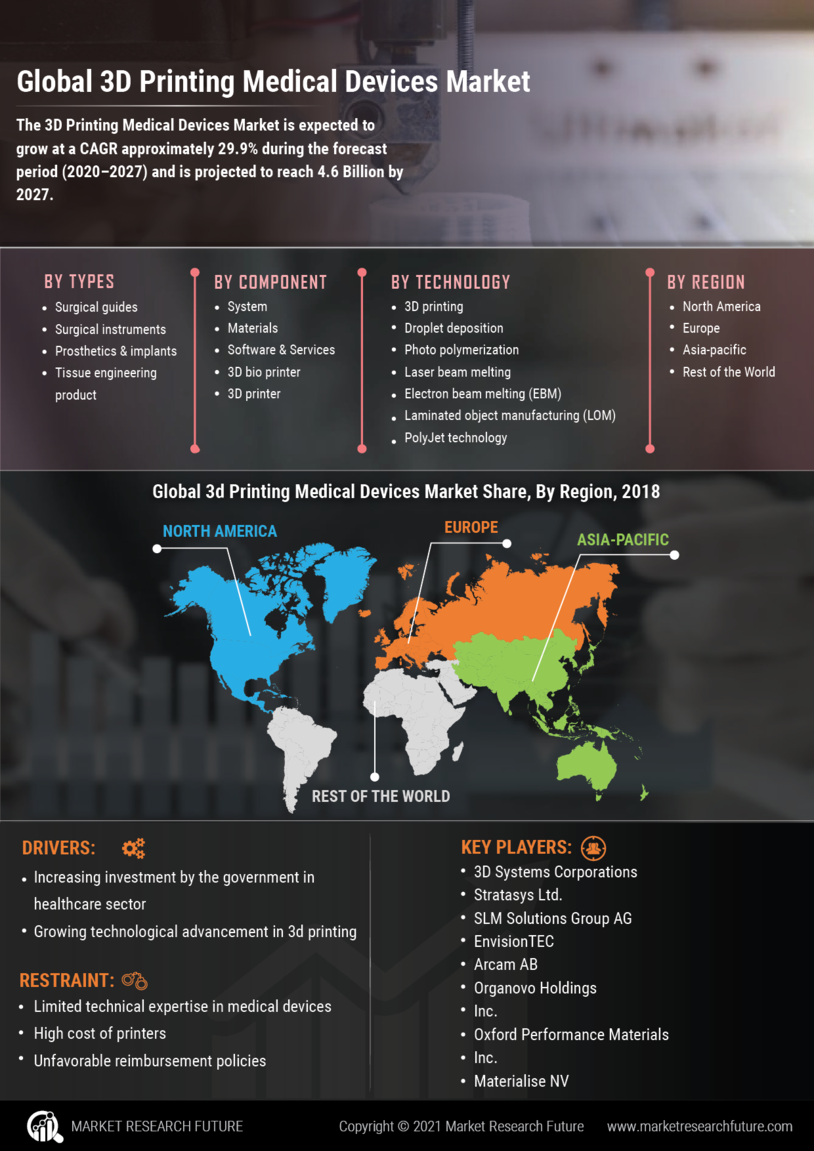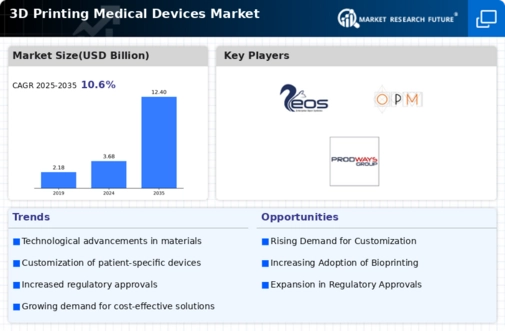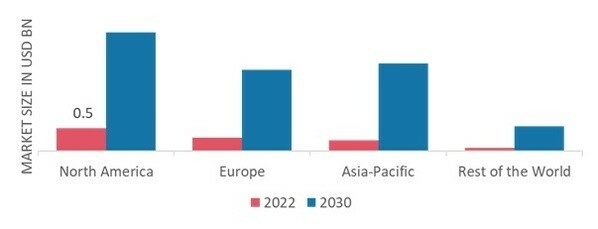3D Printing Medical Devices Market Summary
As per Market Research Future Analysis, the 3D Printing Medical Devices Market was valued at USD 3.26 Billion in 2023 and is projected to grow to USD 9.13 Billion by 2032, with a CAGR of 10.6% from 2024 to 2032. Key drivers include increased public-private funding, high prevalence of dental and orthopedic diseases, and advancements in 3D printing technology. The market is witnessing a shift from traditional to digital manufacturing processes, enhancing clinical outcomes and procedural efficiency. Notable collaborations, such as the one between EOS, Precision ADM, OIC, and Tecomet, aim to streamline additive manufacturing processes, while innovations like Desktop Health's PrintRoll are expanding applications in medical 3D printing.
Key Market Trends & Highlights
The market is experiencing significant growth driven by technological advancements and increasing demand for customized medical solutions.
- Market Size in 2023: USD 3.26 Billion; Projected to reach USD 9.13 Billion by 2032.
- CAGR from 2024 to 2032: 10.6%; driven by rising prevalence of orthopedic and dental diseases.
- Prosthetics segment held ~65-67% of market revenue in 2022; increasing demand for customized implants.
- North America accounted for USD 0.5 Billion in 2022; expected to exhibit significant CAGR growth.
Market Size & Forecast
| 2023 Market Size | USD 3.26 Billion |
| 2032 Market Size | USD 9.13 Billion |
| CAGR (2024-2032) | 10.6% |
Major Players
3D Systems Corporations, Stratasys Ltd, Cyfuse Medical K.K., EOS GmbH, Concept, Oxford Performance Materials Inc, Prodways Group





